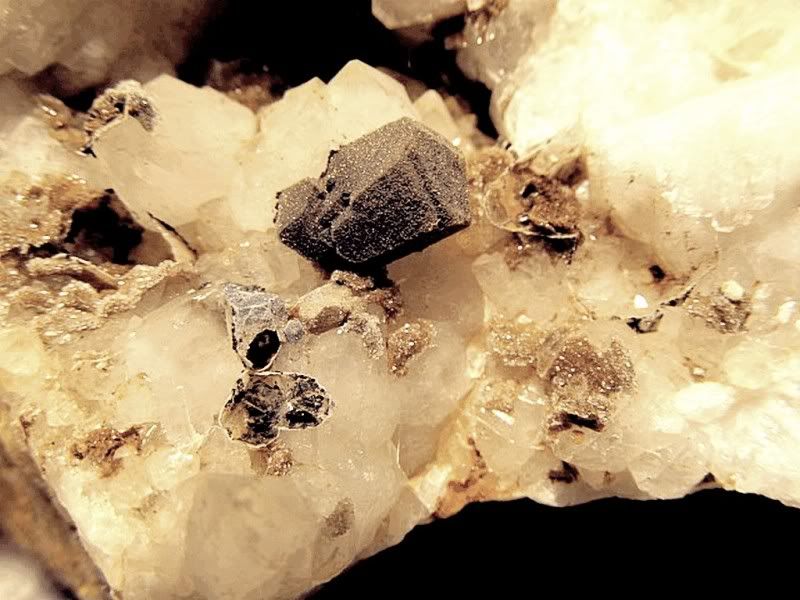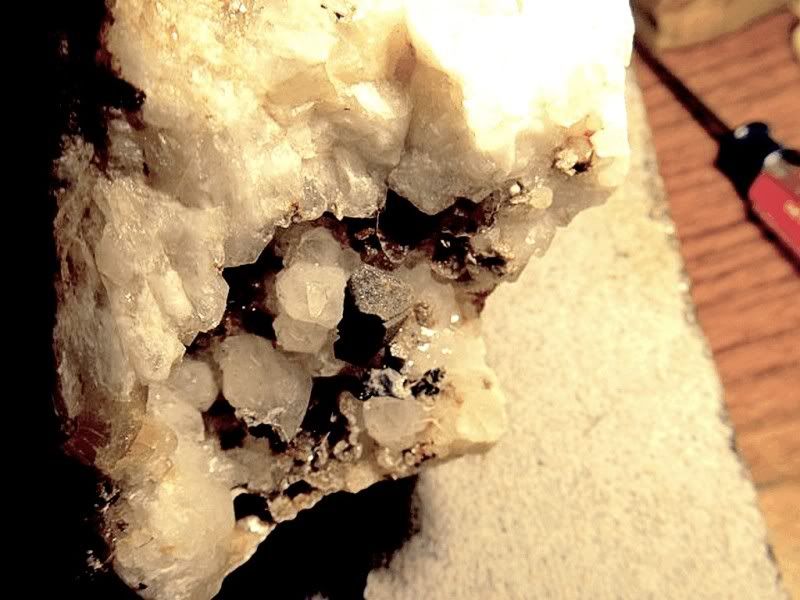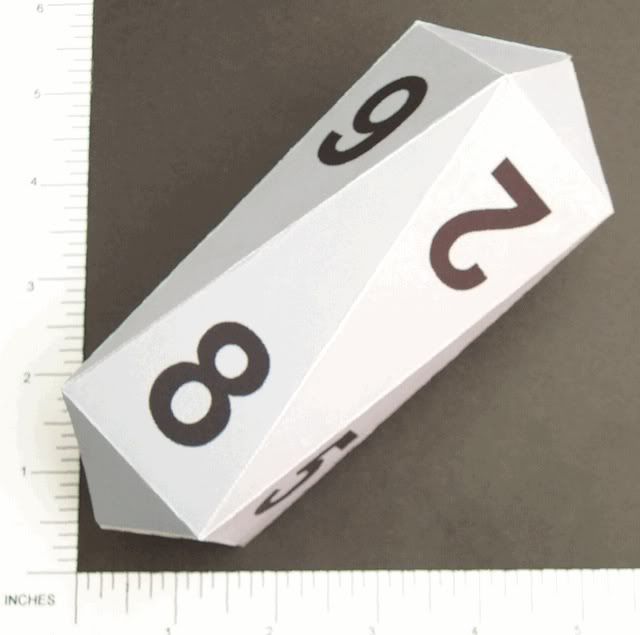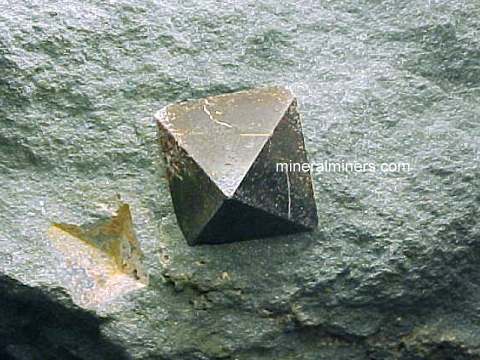|
|
Post by auplater on Mar 16, 2011 16:41:58 GMT -5
Found this crystal amongst the quartz epis on another piece of the Boulder from Diamond Hill Feb 11 dig... it measure's ~ 1 cm high, is stubby and psuedo-hexagonal, grey-brown body with a triangular prismatic termination on top... hard to see in the photos, but the axes of the termination bi-sect the short 3 sides of the hexagonal prismatic body... almost looks like a beryl habit  View from the top  any ideas on what it might be, b4 I start some more rigorous tests, thought I'd ask. At about 7 oclock off the main xtal is a hollowed out smaller one with a white crust on it as well... thanx for any help... John L. Update: on closer examination, the "hexagonal" look is now a more complex shape...the wider pentagonal edges on top taper to narrow sides if the opposite end were exposed, and the narrow top sides expand to wider edges if the bottom were exposed, so the bottom would also likely be a triangular termination rotated 60 degrees wrt the top, I think... interesting xtal structure... more research ... hmmnn. maybe some sort of twinned siderite It looks like this... if you make the triangles into pentagons by adding short sections to the 2 base angles of each triangular face and made it 6 sided instead of 8 sided.. whew!! brain cramp!!  |
|
|
|
Post by major on Mar 16, 2011 22:16:35 GMT -5
This is a siderite inclusion, we have seen a few siderite and calcite moprhs at DH. The inclusion on this one looks to have a face  [a href="  "] "] [/a] |
|
|
|
Post by auplater on Mar 17, 2011 8:16:50 GMT -5
Thnx Bryan... that's what I figured, but I'll probably do some non-destructive tests as well...
I'm trying to figure out the unusual geometry, tho... near as I can conclude, the xtal would best be described as an elongated pentagonal dodecahedron... or maybe an elongated pyritohedron, so maybe the original mineral was pyrite??
John L.
|
|
|
|
Post by rockshine on Mar 17, 2011 8:21:11 GMT -5
Auplater, if you cut out the torsioned middle and slide the two endcaps together, you would have a fair representation of a magnetite crystal, although the rising angle might be somewhat lower than usual
|
|
|
|
Post by auplater on Mar 17, 2011 10:19:52 GMT -5
Auplater, if you cut out the torsioned middle and slide the two endcaps together, you would have a fair representation of a magnetite crystal, although the rising angle might be somewhat lower than usual sort of... except that magnetite is 8 sided (octahedral) and this thing is complex psuedo-six sided prismatic-like with twelve 5-sided faces  |
|
|
|
Post by rockshine on Mar 18, 2011 11:56:40 GMT -5
curiousier and curiousier. The only thing five sided that comes to mind is mud flats that form irregular pentagons as they dry up.
|
|
|
|
Post by auplater on Mar 23, 2011 7:55:59 GMT -5
curiousier and curiousier. The only thing five sided that comes to mind is mud flats that form irregular pentagons as they dry up. We decided on another forum that it's either a compound siderite crystal, made up of intersecting rhombs, or siderite after calcite, which occurs thruout the rest of the rock... wherein the long sides aren't prism faces ...kind of a combo of #'s 2 and split #4  John L. |
|
|
|
Post by arappaho on Mar 23, 2011 9:01:05 GMT -5
That's a tough one all right, John. The flat side(s) on the top in your first pic look like the negative impression of some other crystal yours grew into, which helped to alter the shape of the way it grew. The cavities between the upper and lower segments, in that first pic, would be interesting to look at with a loupe. I'd agree calcite or siderite are the best guesses, but........... Know anyone with a hyper-probe in their basement?  Thanks for your diligence, Joe |
|